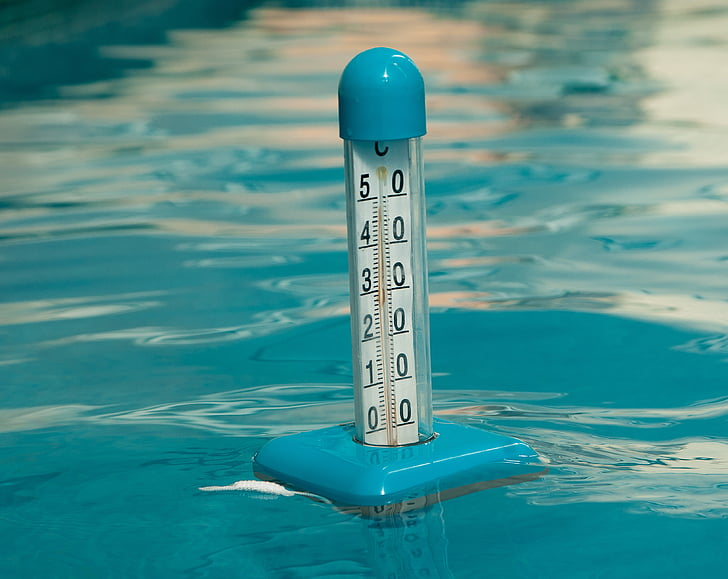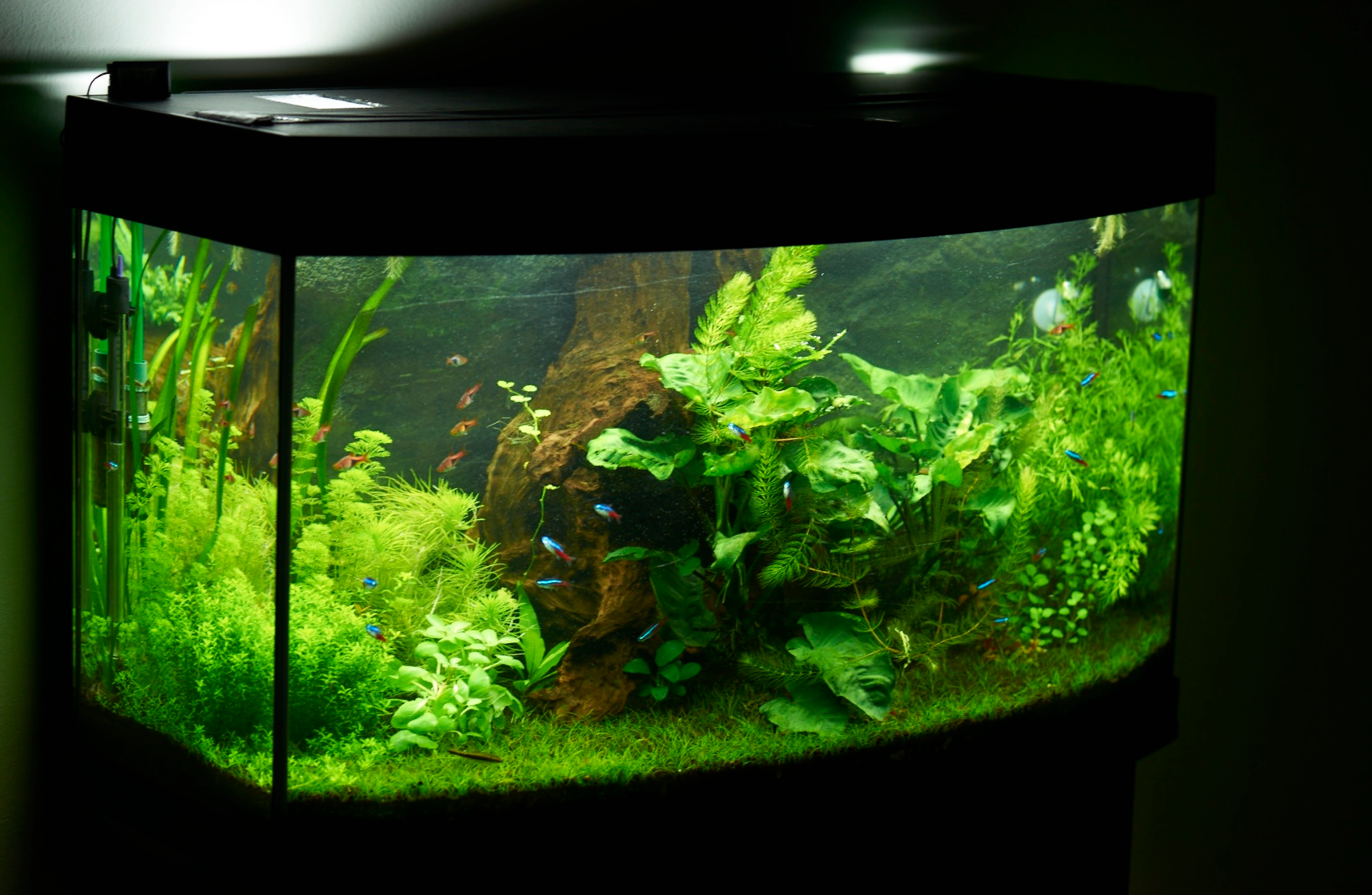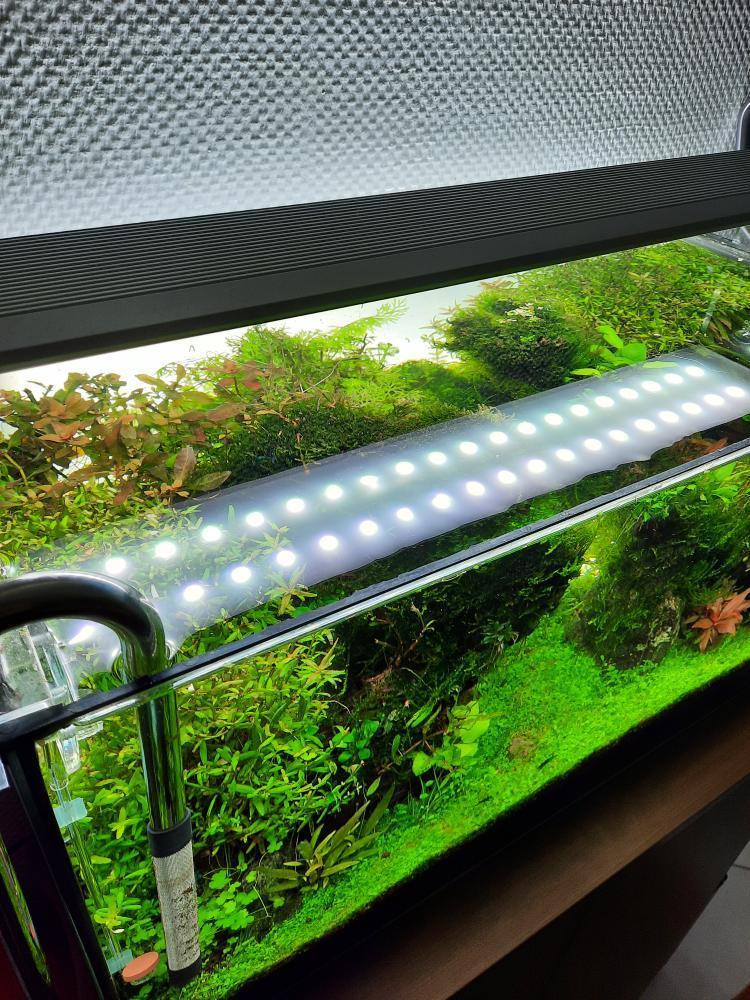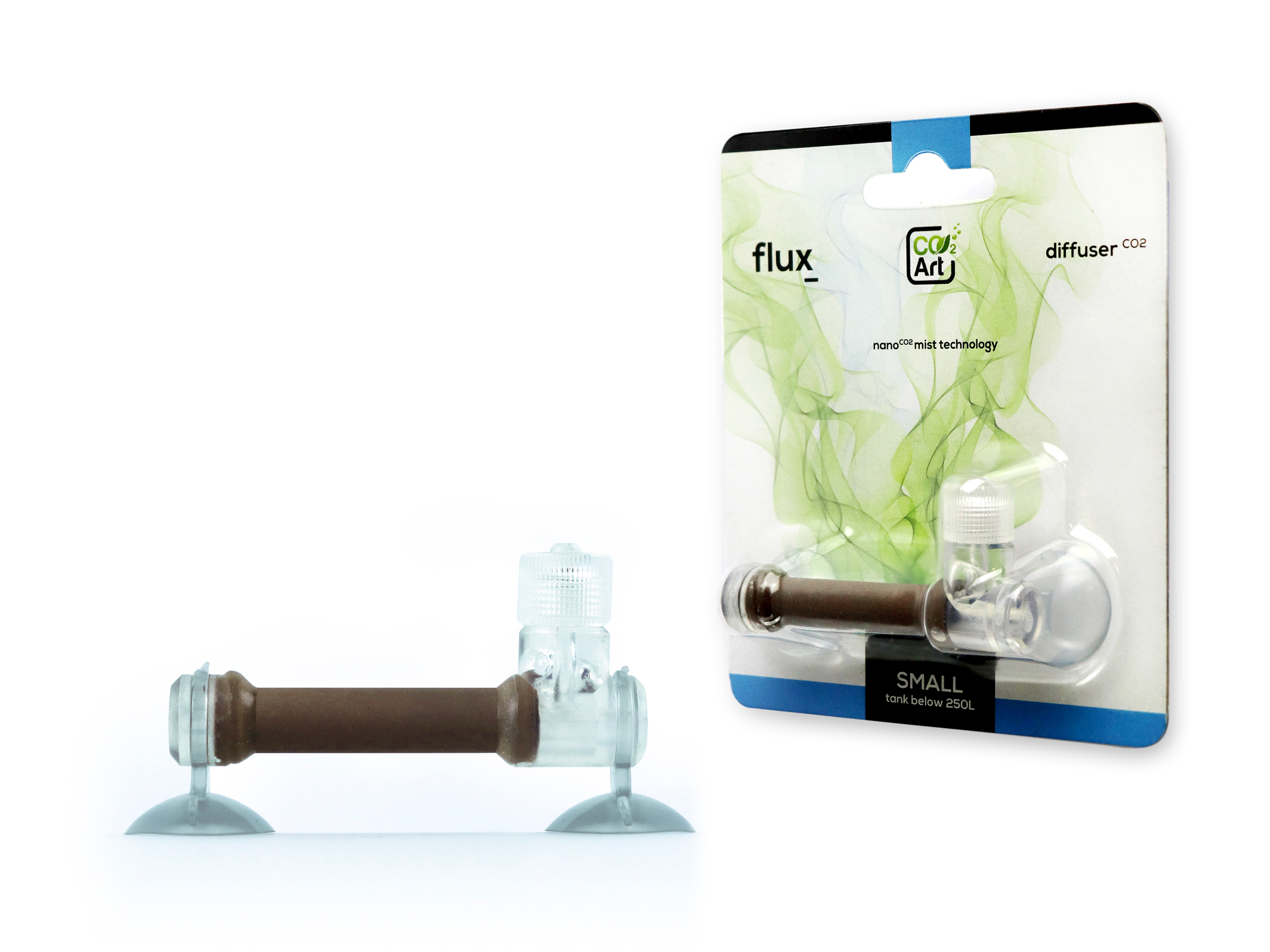What's the Ideal Temperature for a Planted Aquarium
Introduction
Aquarium enthusiasts often marvel at the lush landscapes that can be created within the confines of a planted aquarium. The key to achieving such aquatic splendor lies not just in the selection of vibrant species or the arrangement of rocks and substrate, but critically in maintaining the ideal temperature for aquarium harmony. This temperature serves as the lifeblood for the ecosystem, affecting everything from the delicate balance of aquatic plants to the comfort of the fish that glide between them.
Ensuring the aquarium water temperature is consistent is vital for the health and growth of the aquarium's inhabitants. For budding plant life and the fish that consider this environment their home, the question of what temperature should aquarium water be is not just one of preference, but of survival and well-being.
The best temp for aquarium plants often varies slightly from species to species, but there is a range within which most plants will thrive. This makes understanding and regulating the planted tank temperature a fundamental aspect of aquarium care. It's not simply a matter of setting a heater and forgetting; it's a continuous commitment to monitoring and adjusting to sustain the perfect temperature.
Regularly checking the temperature in aquarium setups is an essential habit for any aquarist. It ensures that the aquatic plants receive the stable environment they need for photosynthesis and respiration, while the fish enjoy conditions that mimic their natural habitats.

In the following sections, we'll explore the pivotal role water temperature plays in nurturing aquatic plants, supporting diverse species, and promoting healthy growth under the glow of carefully calibrated lighting.
Understanding the Ideal Temperature for Aquarium Balance
Delving deeper into the intricacies of a planted aquarium, the ideal temperature for aquarium stability is not merely a singular number to be aimed for; it is a range that respects the delicate interplay between different species of plants and fish. Aquatic plants rely on stable water temperature to perform at their peak, a constant that enables them to absorb nutrients effectively and engage in robust photosynthetic activity. On the other side, the temperatures at which fish flourish are also crucial, as they impact their metabolism, immune system, and overall behavior within the tank.
The aquarium water temperature should be considered as dynamic and life-sustaining as the waters in natural habitats. It is a critical element that can either enhance or inhibit the health of your aquatic plants and fish. As aquarists aim to replicate the natural conditions of rivers and lakes, understanding the nuances of what temperature should aquarium water be becomes essential. This isn't a guessing game but a science that, when mastered, can lead to a thriving planted tank.
But what is the best temp for aquarium plants? The answer varies, but typically, a range between 72-78°F (22-26°C) is suitable for a wide variety of species. Within this spectrum, aquatic plants can achieve optimal growth, and fish can maintain a healthy metabolism.

It's crucial to keep the planted tank temperature within this range, as extremes on either end can cause stress to both flora and fauna, leading to stunted growth, susceptibility to diseases, or even death.
Moreover, it's not just about hitting the right planted aquarium temperature; it's about maintaining it. Fluctuations in temperature in aquarium settings can be as harmful as consistently incorrect temperatures. Such variations can shock aquatic plants and fish, causing them to weaken or become stressed. It's a delicate balance that requires careful attention and regular monitoring to maintain a stable environment conducive to vitality of your underwater garden.
The Role of Aquarium Water Temperature in Plant Health
A stable thermal environment within an aquarium is paramount for the well-being and prosperity of its verdant inhabitants. The warmth of the water is a silent conductor of life, invisibly influencing metabolic rates, enzymatic activities, and overall vigor of the plants submerged in its embrace. For those who curate these aquatic gardens, the consistency and precision of the warmth levels become a daily tableau on which the health of their ecosystem depends.
Each species nestled in the aquatic soil has its own unique thermal preferences, often dictated by their native climates and evolutionary adaptations. Thus, the guardian of a planted tank must become attuned to these requirements, ensuring the waters provide a nurturing cradle for growing and flourishing. It is a balance that must be struck with care; too much warmth and the plants may wilt under the stress, too little and they may languish in the cold.
The temperature plays a subtle yet critical role in facilitating the various biological processes that occur within both the flora and the fauna of the aquarium. Photosynthesis, the fundamental process that fuels plant life, is finely tuned to the warmth of the surroundings. The same holds true for the respiratory requirements of the tank’s inhabitants, which rely on the temperature-regulated solubility of oxygen in the water.
Maintaining this delicate equilibrium is not only a matter of setting a heater to the desired number. It is about understanding the thermal currents, the way warmth distributes throughout the space, and how external factors such as room temperature, lighting, and even the placement of the tank can influence the internal conditions.

A vigilant aquarist knows that regular checks are as crucial as the initial setup. Thermal stability is the keystone for a thriving planted tank, where each element, from the smallest leaf to the most agile fin, is part of a balanced, harmonious whole.
In the subsequent sections, we will delve into the tools and techniques to measure and maintain this stability, the signs to look for in assessing plant health related to thermal conditions, and the best practices to ensure that the vitality of your aquatic garden is sustained through optimal thermal regulation.
Determining What Temperature Should Aquarium Water Be
When it comes to establishing a thriving aquatic environment, one of the first questions to address is the precise warmth level the water should achieve. This is not a value to be picked at random or based on anecdotal evidence; rather, it requires a calculated approach, taking into account the diverse requirements of the tank’s inhabitants.
Aquarists must embark on a journey of discovery, learning about the natural habitats from which their aquatic plants and companions originate. Tropical plants and fish, for instance, are accustomed to consistently balmy conditions, while species from temperate zones may prefer cooler waters. Here, research is key — understanding the origins of each species can guide the setting of the heater, ensuring that the environment mimics the natural conditions as closely as possible for optimal health and vitality.
The complexity of this task is compounded when housing a variety of species within a single ecosystem. A balance must be struck, finding a median that caters to the collective needs without compromising the health of individual species. This often means selecting plants and fish with overlapping temperature preferences, thereby creating a cohesive and sustainable living environment.
Once the desired range is identified, precision in maintaining these conditions becomes the next challenge. This necessitates the use of reliable thermometers and heating systems that can keep the water at a consistent warmth, avoiding fluctuations that can lead to stress or illness in both plants and fish. The aquarist’s role is thus transformed into one of vigilant stewardship, ensuring that the water's warmth is a constant, comforting embrace for the life it sustains.
It is this careful calibration and consistent maintenance of warmth levels that form the cornerstone of successful aquarium husbandry. With the right tools and knowledge at hand, aquarists can create a stable, flourishing underwater oasis that mirrors the serene beauty of a natural aquatic landscape.
Catering to a Diverse Ecosystem
The quest for the best temperature to promote the prosperity of aquarium plants is akin to finding a universal language in a room full of diverse dialects. Each plant species whispers its needs in nuanced thermal preferences, and the attentive aquarist must listen closely. While some plants bask in the warmth of higher temperatures, others thrive in cooler conditions, making the determination of an ideal range both an art and a science.
For a majority of commonly kept greenery, a stable environment that does not stray far from the 72-78°F (22-26°C) range is often recommended. This is not just a number but a carefully deduced mean, designed to cater to a wide spectrum of plant life. Within this band, most plants can perform photosynthesis efficiently, absorb nutrients effectively, and display vibrant development and coloration.

Yet, this temperature range is more than a mere guideline; it's a harmonious backdrop that allows for the subtle symphony of life to unfold within the tank. Enzymatic reactions crucial for plant growth are optimized, cellular respiration is at its peak, and the conditions for reproducing natural life cycles are emulated. Achieving this consistency is not only about the vitality of the plants but also about the visual aesthetics they offer to the observer.
In this controlled warmth, aquatic plants can become the lush, verdant centerpieces of the aquarium, providing shelter and oxygen to their animal counterparts. The aquarist's role is to sustain this warmth, using heaters and thermometers to mitigate the effects of external temperature drops or spikes, which can be particularly challenging during seasonal changes.
Furthermore, it is important to consider that the best temp for aquarium plants is one that also takes into account the needs of the fish and other organisms that share their home. It is a delicate balancing act, one that requires not only an understanding of the individual requirements but also a commitment to the overall harmony of the tank's ecosystem.
Consistency in Planted Tank Temperature: A Key to Aquatic Harmony
The stability of water temperature in a planted aquarium is not only crucial for the thriving flora but also for the aquatic fauna that weave through the foliage. A consistent temperature range is imperative for maintaining the delicate balance of life beneath the water's surface. It provides a reliable foundation upon which the rhythms of the aquarium's inhabitants can synchronize.
Fish, much like the plants they live amongst, are sensitive to sudden shifts in their environment. Their biological processes are tuned to the temperature of their surroundings, from the metabolism that fuels their exploration to the immune responses that keep them healthy. When the water temperature is maintained within an appropriate and stable range, fish exhibit natural behaviors and show vibrant colors, a sign of their well-being.
However, when temperatures deviate, even by a few degrees, it can lead to stress, which is often a precursor to illness in fish. Their immune systems are compromised, and their ability to recover from disease or adapt to other changes in their environment is diminished. This is why the role of the aquarist is pivotal — by regularly monitoring and adjusting the water temperature, they can prevent these detrimental fluctuations.
The right temperature range also encourages beneficial bacterial colonies to flourish. These microorganisms play a critical role in breaking down waste products, thus maintaining water quality and reducing the likelihood of harmful ammonia spikes that can endanger both fish and plants.
The emphasis on maintaining the right water temperature cannot be overstated. It is as vital as the quality of the water itself. By investing in reliable heating systems and thermometers, aquarists can ensure their underwater communities remain robust and resilient. The next sections will delve into the tools and techniques for achieving this stability, ensuring that the aquatic life in your care can not only survive but truly thrive.
Aquatic Plants: The Heart of a Planted Aquarium
Aquatic plants serve as the pulsing heart of a planted aquarium, their vitality essential for the ecosystem's health. They do more than just add aesthetic value; they oxygenate the water, provide shelter, and can even help maintain water quality. The temperature of the water is a critical factor that influences these roles significantly. If the warmth of the tank is too low, plant metabolism slows, hindering their growth and oxygen production. Conversely, if the temperature is too high, it can lead to diminished oxygen levels and promote the algae growth that can outcompete and overshadow the plants. Aquarists must, therefore, maintain the ideal temperature to ensure that their aquatic plants can fulfill their vital functions effectively.
Water Temperature Variations and Plant Adaptations
Different aquatic plant species have evolved to thrive in specific temperature ranges, a testament to their adaptability. Some plants can tolerate a wide range of temperatures, while others might require a narrower, more consistent range to prosper. For instance, tropical plants have adapted to warmer waters, whereas plants from temperate regions can often tolerate cooler temperatures. When faced with temperature variations, plants may adjust by altering their rate of photosynthesis and respiration. However, these adaptations have limits; beyond a certain threshold, the health of the plants can be compromised, highlighting the importance of careful temperature management within the aquarium.
The Symmetry Between Temperatures, Fish, and Plant Life
In a well-maintained aquarium, the right temperature is the linchpin that ensures a harmonious relationship between fish and plants. Each relies on the other in a mutualistic relationship: fish produce carbon dioxide necessary for plant photosynthesis, while plants oxygenate the water and remove toxins, creating a healthier environment for the fish. When the temperature is kept within the ideal range, this symbiotic relationship is optimized. Fish are active and healthy, and plants can grow vigorously, enhancing the overall well-being of the aquarium.
Lighting and Temperature: A Symbiotic Relationship
Lighting is not just a source of energy for plant growth but also a factor that influences the tank's temperature. The type of lighting used, its intensity, and the duration it's kept on all contribute to the thermal profile of an aquarium. For example, LED lights might emit less heat compared to metal halides, which can significantly warm the water. The aquarist must consider the impact of their lighting choices on both the temperature and the plants that rely on it for photosynthesis. A careful balance must be struck, where the lighting provides sufficient energy for growth without causing undesirable shifts in temperature, maintaining a stable environment for all the tank's inhabitants.
The Importance of Monitoring Fish Response to Water Temperature
Observing the behavior of fish is an essential method for assessing the appropriateness of water temperature in an aquarium. Fish are remarkably adept at communicating discomfort through changes in activity, color, and eating habits. A fish that is too warm may become lethargic, gasp at the surface, or lose its appetite. Conversely, fish in water that is too cool can become sluggish and susceptible to infections. Aquarists must remain vigilant, interpreting these signs and making the necessary adjustments to the temperature, ensuring their aquatic companions live in a comfortable and stress-free environment.
CO2 and Temperature: The Photosynthesis Connection
The connection between CO2 diffusion and water temperature is a delicate dance of chemistry and biology that underpins the process of photosynthesis in aquatic plants. As the temperature of the water increases, the solubility of CO2 decreases, which can limit the amount available for plants to convert into oxygen and sugars. This is why it's crucial to maintain a balance; too high a temperature can stifle the photosynthetic process, while too low may slow it down.

Both the health of aquatic plants and the oxygenation of the aquarium depend on this balance, making the management of CO2 levels and water temperature an ongoing priority for aquarists.
Beneficial Equipment: Heaters and Thermometers
In the world of aquarium maintenance, heaters and thermometers are not just tools but guardians of aquatic life. Heaters ensure that the water remains at a consistent temperature, vital for the health of both fish and plants. Modern aquarium heaters often come with precise thermostats and can be set to maintain the exact temperature required for a particular ecosystem.

Thermometers, on the other hand, are the aquarist's eyes, constantly checking that the heaters are performing their function correctly. They come in various forms, from traditional glass to digital probes, allowing for constant monitoring. The combination of reliable heaters and accurate thermometers allows aquarists to maintain a stable environment, crucial for a thriving planted aquarium.
Conclusion: The Joy of a Well-Maintained Planted Aquarium
In conclusion, the joy of cultivating a planted aquarium lies in the delicate balance of its ecosystem. Achieving and maintaining the correct water temperature is a testament to the aquarist's dedication and understanding of their aquatic world. It fosters a thriving community of plants and fish, each benefiting from and contributing to the tank's collective health. When the temperature is right, plants flourish, fish display their most vibrant colors and behaviors, and the entire system works in harmony. It is this intricate balance that makes the art of aquarium keeping both a challenging and immensely rewarding hobby.



